Premium Air to Water Setup
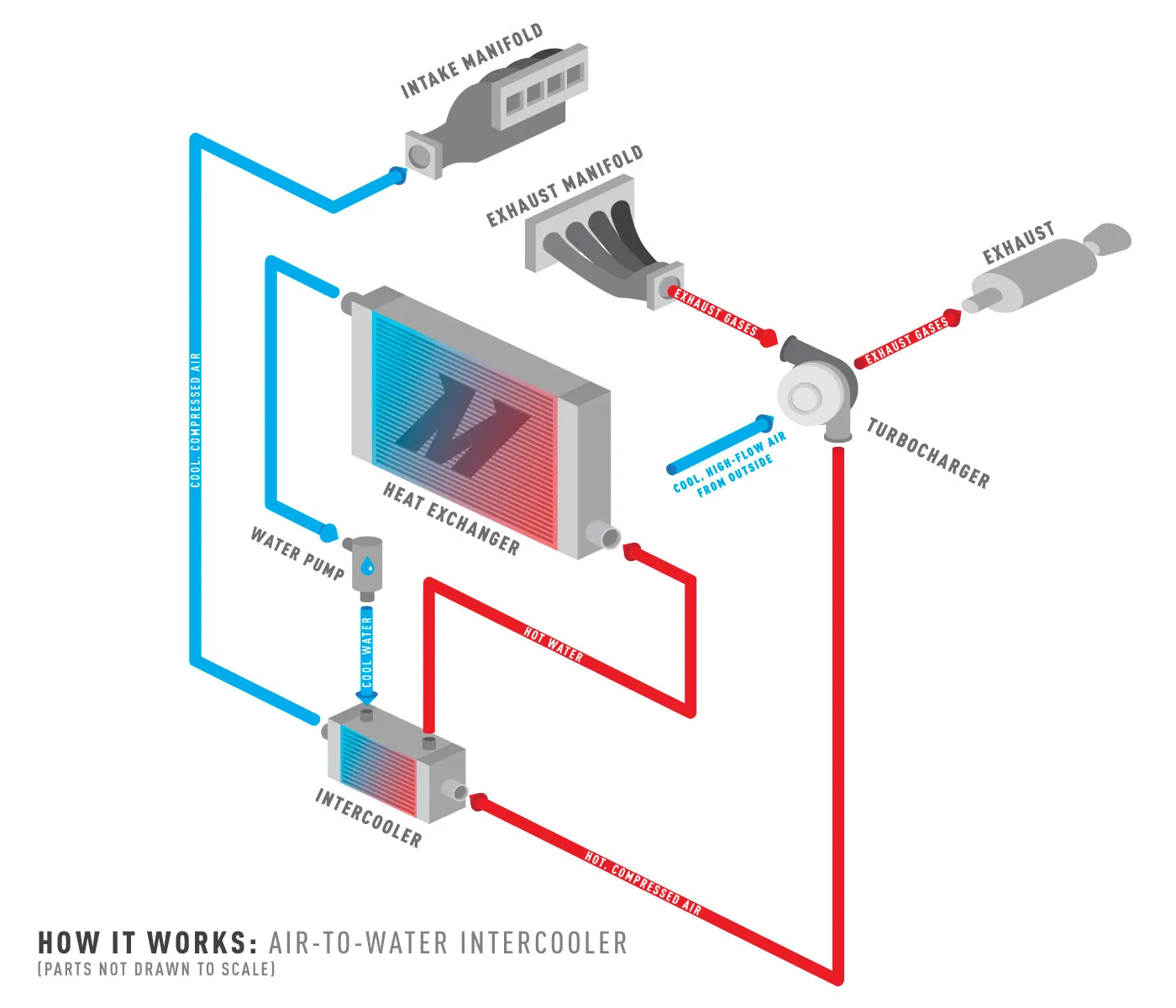
What is A2W Cooling?
"In an air-to-water intercooler, the heat exchange occurs between the air coming in and the water flowing through the intercooler–the heat from your charge pipes is transferred to the water, and cooler and denser air is sent through the other side. One of the key benefits to this type of design is that, unlike air-to-air intercoolers, an air-to-water intercooler can be mounted virtually anywhere along the charge piping route, provided there’s a means to send water to and from it."
Pro's
"The idea behind this intricate system is simple: water has a much higher thermal capacity and conductivity than air. Simply put, water is much more effective at extracting heat from the charged air than air is. This trait means that the intercooler cores are just as effective as their air-to-air counterparts at only a fraction of the size. The caveat to the shrinking core size is that these intercoolers require a complete secondary coolant system to function."
"This system also lends itself to better performance while under heavy load, like towing large payloads uphill, for instance."
"Another upside to an air-to-water system is the constant coolant cycle through the system, which wards off heat soak, even at idle or slow speeds. The coolant still moves through the system, where heat is dissipated by the intercooler heat exchanger located in the vehicle's cooling stack. Like the primary cooling system, the secondary air-to-water intercooling system can depend on the radiator fan at idle and low airflow, making this system ideal for both high-speed track monsters, daily drivers, and rock crawling machines. In some systems, like Infiniti's Q50/Q60, the intercooler's water pump speeds vary depending on engine load to deliver precise cooling for every situation."
"Other than the more compact core size, there are several other reasons that an air-to-water system is more appealing to auto manufacturers and enthusiasts alike. One of the most notable is that the intercooler itself isn't reliant on a fresh air source to facilitate the cooling process. That means your compact intercooler has free range around the engine bay for mounting locations, which is ideal for shortening the distance between the turbo and intake manifold for improved efficiency."
Con's
"The perks don't come without compromise, however. As previously stated, these systems are complex and add an entire secondary cooling system to the vehicle, which means for higher risk components to fail or leak. Upgrading, maintaining, or adding an A2W setup to your vehicle carries a more extensive parts list, so it's not always for the faint of heart or wallet. Generally speaking, as efficient and consistent as these systems are, lowering the coolant temperature down to ambient levels requires more steps and more components, so A2A systems are more advantageous to this point."
Mid-Engine
As you can see, Air-to-water systems have much more benefits than its counterpart A2A. Running a proper Air-to-water system in a mid-engine vehicle typically decreases Turbo Lag (not much), and they stay more efficient than a Air-to-air system. It does take up more space. But tried and true; A2W system for Mid-Engine cars are the way to go!
Our Recommendation
We highly recommend our Premium list A2W System for the more "Send-it" style driver, those looking to build a racecar, or the occasional track car.
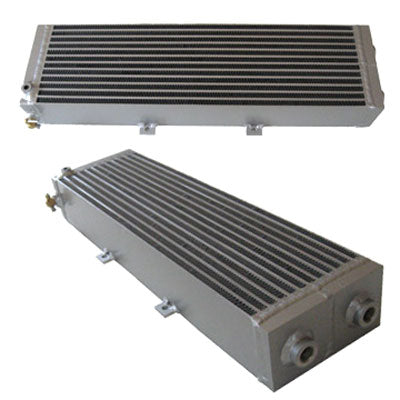
A2W Radiator/Heat Exchanger
$199.99 - This is what we use in our track car; this 3.5" deep dual pass Heat Exchanger does the trick with proper ducting and fans. The only better option requires Building a Custom Garret Core dual pass setup...be prepared to spend hundreds more! We recommend this Heat Exchanger for use up to 600whp (1-25psi Boost).
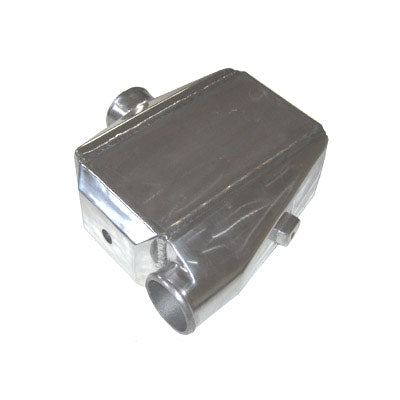
A2W Intercooler
($200-$1500) - This is where we cannot recommend a specific Intercooler because you will want the biggest you can fit! With every setup being slightly different space-wise; we suggest finding the biggest of the cheaper pre-built intercoolers that you can make fit for your specific application. If you have the budget, we highly recommend having a Garret core unit built and to include a filler welded to it for ease! You can even weld the bung for a BOV onto it as well for space savings! Another option is to buy the biggest cheap pre-built Intercooler, and wrapping it in heat insulation. With proper heat management in your engine bay, these cheaper units can do a ton of work!
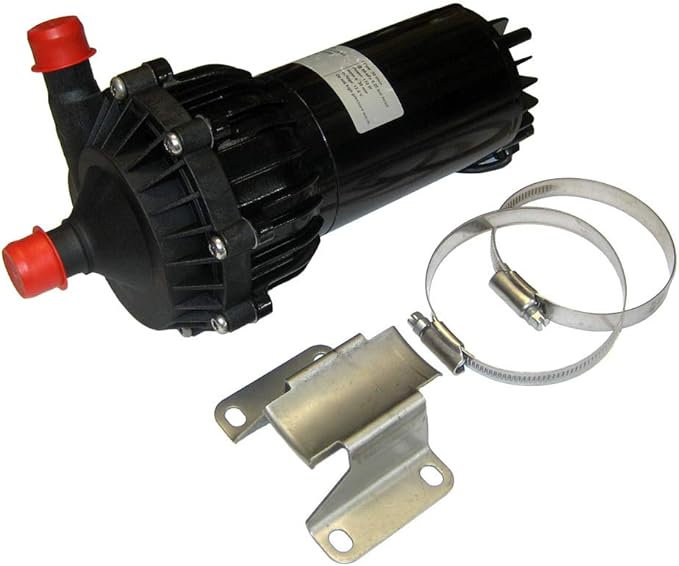
A2W Pump & Connector
$272.73 -The Johnson CM90 pump with 3/4" outlet and inlet is what we use on our cars. This unit pumps 17.2GPM which is probably overkill; however, with the length of hose required, and bends to make for the MR2, this unit will be everything you need to keep a good flow!
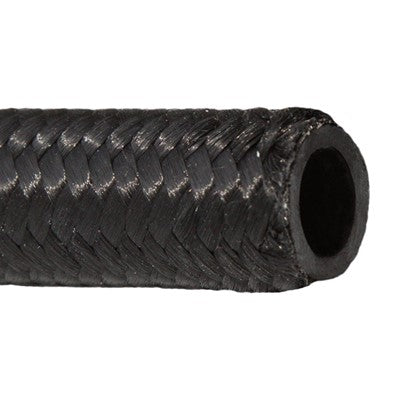
-12AN Hose and Fittings
$8.30/ft and average $16/Fitting - We recommend going full -12AN hose and fittings! Its not necessary, but it will last longer, have fewer kinks done correctly, and will flow much better! Also...who doesnt like a full AN setup! Theres nothing wrong with using the Gates Heater Hose or for a minor upgrade - check out our Vibrant Heater Hose! This one makes no real performance "Increase".
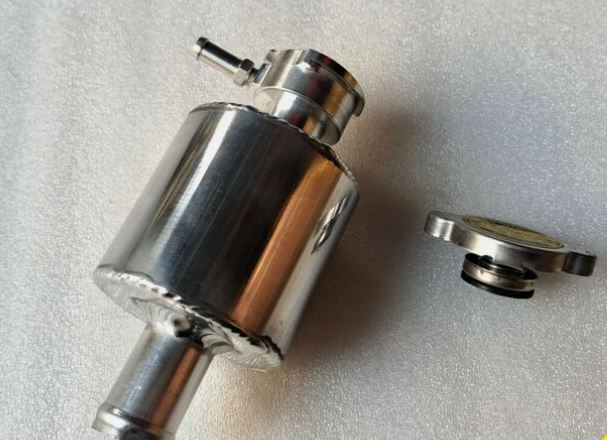
Overflow/Filler
$39 - We Highly recommend having this one welded to your intercooler as we discussed above...However, If you're like us - we use what we have! We cannot recommend these enough for the price and flexibility of location! It does exactly what you need in a compact size! You can mount this at the highest point in the system to use as a bleed point, filler, and overflow! Just buy a hose clamp and a 1 inch to 3/4 inch hose adapter!
